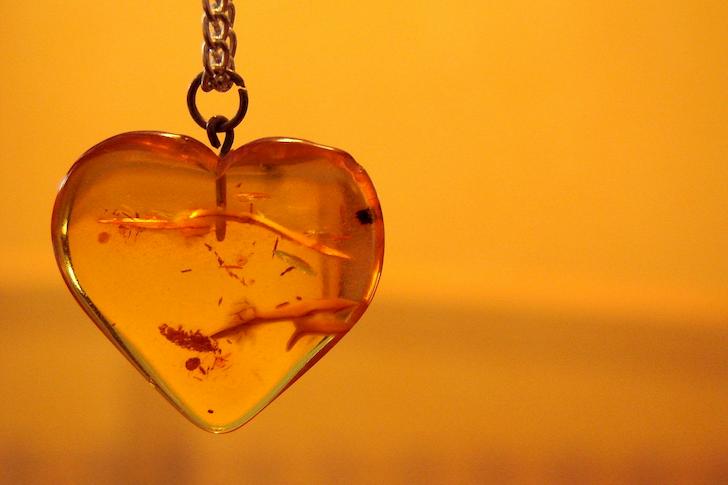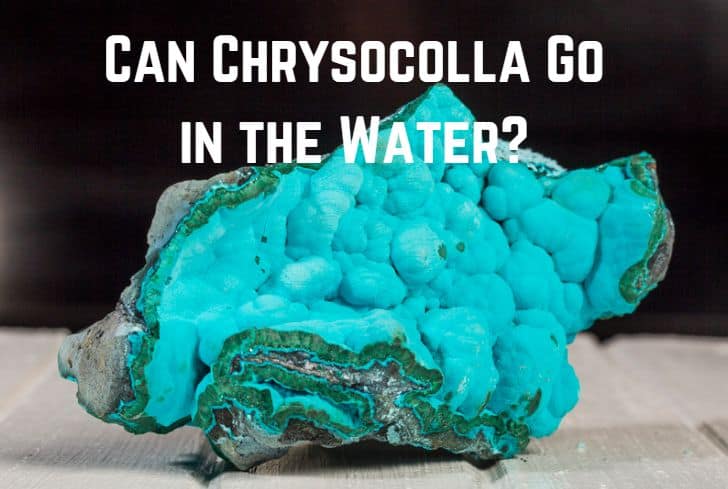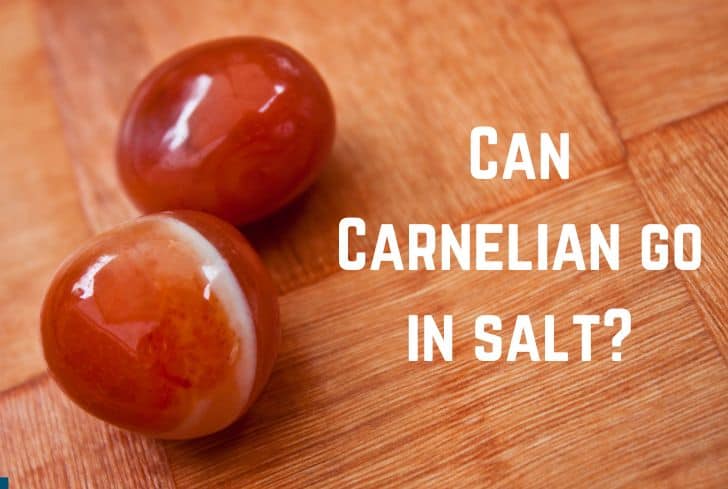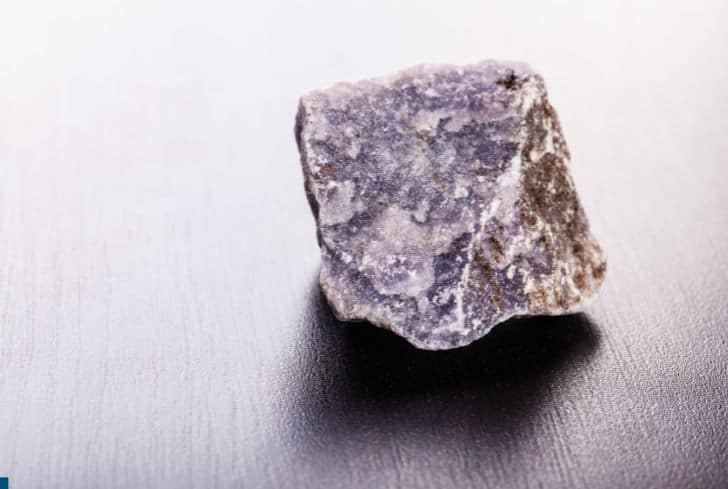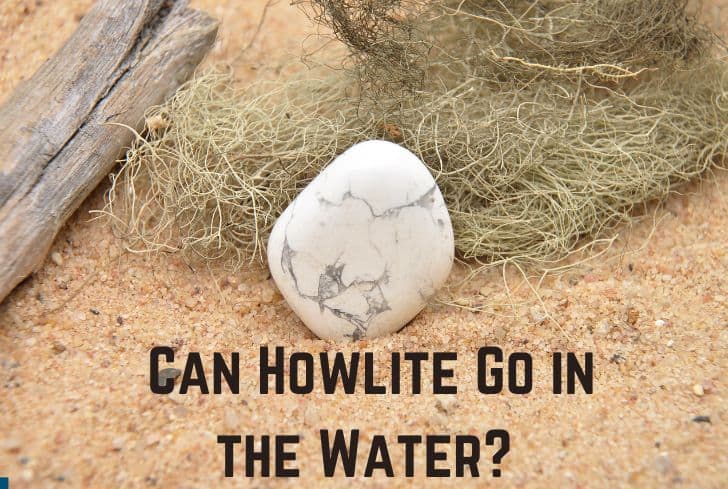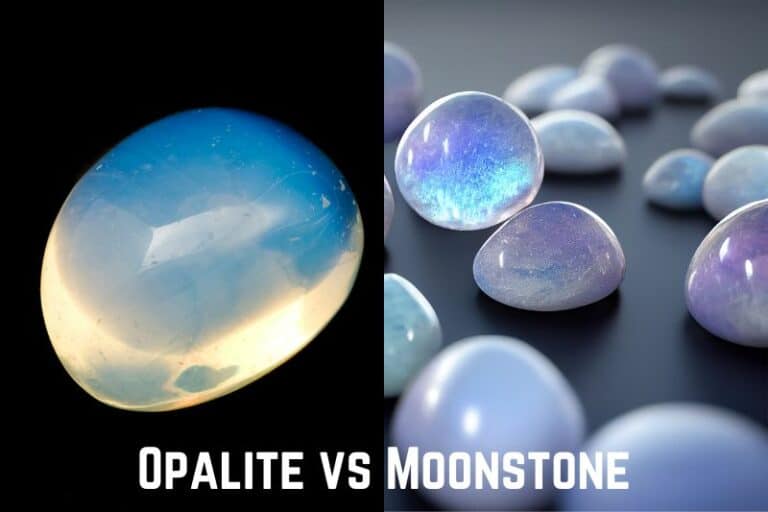Can Goldstone Go in the Water? (And in the Salt?)
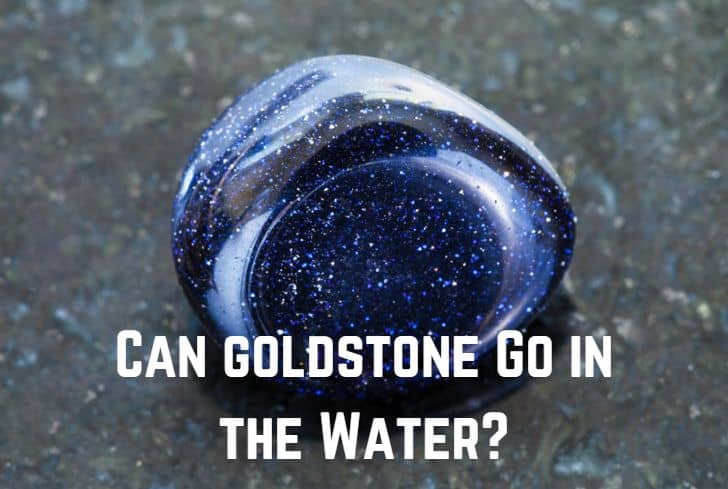
Goldstone is an artificial glittering glass that contains beautiful and reflective inclusions. It is one of the most popular man-made gems and is usually cut into cabochons, beads, and tumbled stones. Another name for goldstone is aventurine glass; it is based on the original Italian name avventurina ( “adventure” or “chance”), a reference to the chance discovery of the glass.
Have you ever wondered if Goldstone can go in the water? In this article, we are going to discuss just that. We will begin by looking at the properties of Goldstone and its production. Then we will talk about its interaction with various elements. Finally, we will learn how to clean it.
Read: Can Chrysocolla Go in the Water?
Can Goldstone Get Wet?
Yes, Goldstone can get wet. It has a value of 6 on the Mohs Hardness Scale, which is above the minimum value required for minerals to be safe underwater. However, like all stones, goldstone should not be immersed for long, as water can damage its structure and appearance.
Mohs Hardness Scale is a relative measure of a mineral’s resistance to scratching. Besides that, it also indicates a stone’s relationship with water. Usually, a value over 5.0 implies that the stone is safe for immersion.
Softer stones like selenite (2.0 on Mohs Hardness Scale) should never be immersed. But even harder stones are not safe in the water for too long. Water enters the crevices of stones, expanding their cracks. These fissures can slowly damage the structure of the stone, making it prone to cracking.
Water also tarnishes the appearance of stones. It strips off the polish from their surface, making them look duller. This is especially bad for goldstone since its smooth polish is one of its specialities.
Properties of Goldstone
These are the properties of Goldstone:
- Appearance: The most common form of goldstone is reddish brown, which is due to the tiny crystals of metallic copper. Other colour variants of goldstone are based on other elements. When cobalt or manganese is used instead of copper, the crystals have a more silvery appearance and ultimately become blue or purple goldstone. Green or chrome goldstone can also be acquired by using chromium oxides.
- Structure: Goldstone is a man-made crystal that is usually cut into cabochons and other ornaments. But one can also purchase rough goldstone for lapidary projects. These are usually sold as broken chunks or slabs, which are suitable for cutting. One needs to thoroughly examine the slab’s structure—its crystal sizes, areas without crystals, presence of gas bubbles, etc.—to get the best material.
- Hardness: Goldstone has a value of 6 on the Mohs Hardness Scale, similar to turquoise. This means that is moderately resistant and can go in the water for a short period. Goldstone’s hardness makes it ideal for ornamental use: it is usually cut into cabochons, sculptures, beads, etc. In jewellery, it serves as a simulant of sunstone.
- Production: Goldstone is produced by heating molten glass that contains granules of copper oxide. After the copper oxide is completely dissolved, the melt is allowed to cool very slowly. This slow cooling gives copper ions the time to join each other and form octahedral copper crystals. The bright lustre of these copper crystals is what causes the glittery appearance of the goldstone.
- Optical Effect: Goldstone is known for its highly reflective inclusions, whose metallic lustre gives the stone a glittering appearance that immediately attracts attention. In gemology, this effect is known as aventurescence. The tiny particles not only create this optical effect but also influence the material’s body colour. The glass of reddish brown goldstone is colourless; its colour comes from the reflections from the copper inclusions.
Besides these, goldstone is also believed to have spiritual properties. It is called the stone of ambition and is said to help people in attaining their goals. It is also believed to relieve tension, rejuvenate the wearer, and fill them with positive energies. Check out this video by Crystal Meanings to learn more about the metaphysical properties of goldstone.
Can Goldstone go in the Sun?
Yes, goldstone can go in the sun. Recharging stones under sunlight is a popular way of recharging them, and it is perfectly safe for goldstone. Many suggest that sunlight is the best way of recharging goldstone due to its composition.
Goldstone is made by a heating process, so it’s almost as if fire gives birth to it. Therefore, recharging the stone via light/heat is considered apt. So, recharging your goldstone via sunlight is an excellent choice.
Besides that, you can also try other recharging methods. These include leaving your stone out in moonlight or immersing it in moon water; burying it in the earth; or smudging it with sage.
Can Goldstone go in the Salt?
Yes, goldstone can go in the salt. It has a value of 6 on the Mohs Hardness Scale, which is above the hardness of common salt (2.5-3), so it will not be scratched by salt particles. However, like all stones, goldstone should not be immersed in salt water, as it is even more damaging than regular water.
Using salt is a popular way of recharging stones. Simply fill a bowl with salt and leave the stone on it. Since goldstone is harder than salt, physical contact will not scratch it.
However, you should never immerse goldstone (or any crystal) in salt water. Salt, when dissolved in water, can enter the crevices of stones. These particles stay there even after the water evaporates, expand the cracks, and slowly damage the structure of the stone.
Read: Can Topaz go in Water?
Salt water also tarnishes the appearance by stripping off the polish from the stone’s surface, making it duller. Finally, salt water can also react adversely with the elements of crystals, especially those containing iron. It hastens the rusting process by making the iron lose its electrons more easily.
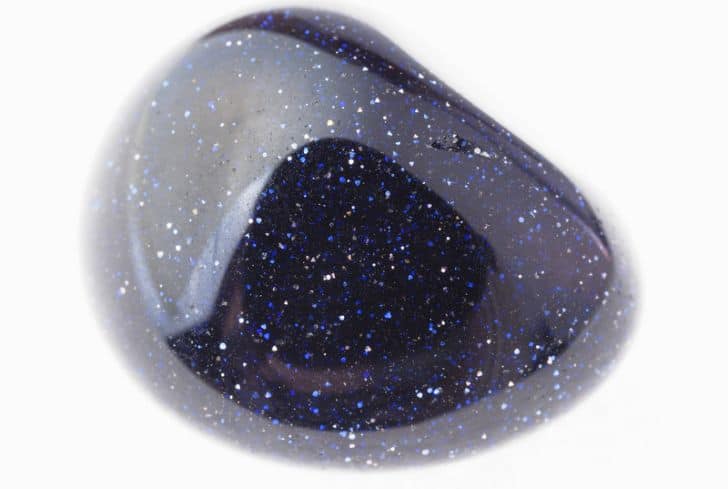
How do You Charge Goldstone?
Goldstone is an artificial glass stone that is highly prized for its beautiful aventurescence effect and its metaphysical properties. Goldstone is produced by a heating process—in a way, it is born out of a fire—so the best way to recharge it is via the light and warmth of the sun.
Keeping crystals out in the sunlight is a common way of recharging them, and it is perfect for goldstone. Put the stone in a place which gets direct sunlight or on a window sill; the glass will protect the stone against harmful UV rays while retaining the energies of sunlight. You can also try using a purification lamp.
Some people recommend recharging goldstone based on its colour. So, if you have blue goldstone (associated with water) you can try charging it with water, which is safe for all goldstone variants. For green goldstone (associated with the earth), you can try placing it on a vial filled with sand.
Before recharging your goldstone, make sure you cleanse it. We describe the entire cleaning process using a soap-water solution in a later section. You can also dust the stone off with a cotton wool ball.
Is Goldstone a Real Crystal or Man-made?
Goldstone is a man-made glittering glass, made by slow cooling in a low-oxygen atmosphere. Its manufacture was first documented in 17th-century Italy, although older specimens have also been found. Goldstone is known for its beautiful aventurescence, which inspired the naming of natural stones.
The Miotti family in Italy first manufactured goldstone in the 17th century, and they were granted an exclusive license by the Duke. As per urban legends, goldstone was an accidental discovery (hence the name aventurine/chance) of Italian monks or the product of alchemy, but there is no documentation for this.
A goldstone amulet was also discovered in a 12th-century Persian collection, indicating that earlier artisans were also able to create it. Goldstone is manufactured by melting silica, copper oxide, and other metal oxides, which reduces copper ions to elemental copper.
The melt is then sealed off from the air and kept within a narrow temperature range, allowing metallic crystals to precipitate. The entire melt is then cooled into a single solid mass, which is then shaped.
Because of its gorgeous aventurescence, goldstone is highly valued. It serves as a simulant of sunstone, and the blue variant of goldstone can also serve as an alternative for lapis lazuli.
Read: Can Garnet Go in the Water?
How to Cleanse Goldstone?
Follow these steps to clean goldstone:
- Mix a soft soap/detergent with lukewarm water.
- Immerse goldstone in the solution and clean it with a soft brush.
- Rinse the stone under running water for a few minutes to remove excess soap.
- Let the stone air dry. Ensure that you twist it a few times to get rid of all water.
Conclusion
In this article, we have looked at goldstone’s interaction with water. Given its hardness of 6 on the Mohs Hardness Scale, goldstone is safe to be put into water, although it should not be immersed for long. We looked at the properties and production of goldstone. Then we discussed its interaction with various elements. Finally, we learnt how to clean it.

